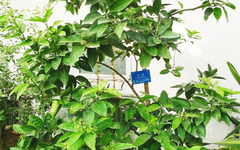Source: Zhangjiagang Traditional Chinese Medicine Hospital
In daily life,
we often come across many traditional Chinese medicinal materials.
Can you recognize them all?
Jiangsu Provincial Administration of Traditional Chinese Medicine
has specially created
the “Encyclopedia of Chinese Medicine”
to help everyone understand the herbal medicines in daily life.
Please pay attention.
▼▼▼
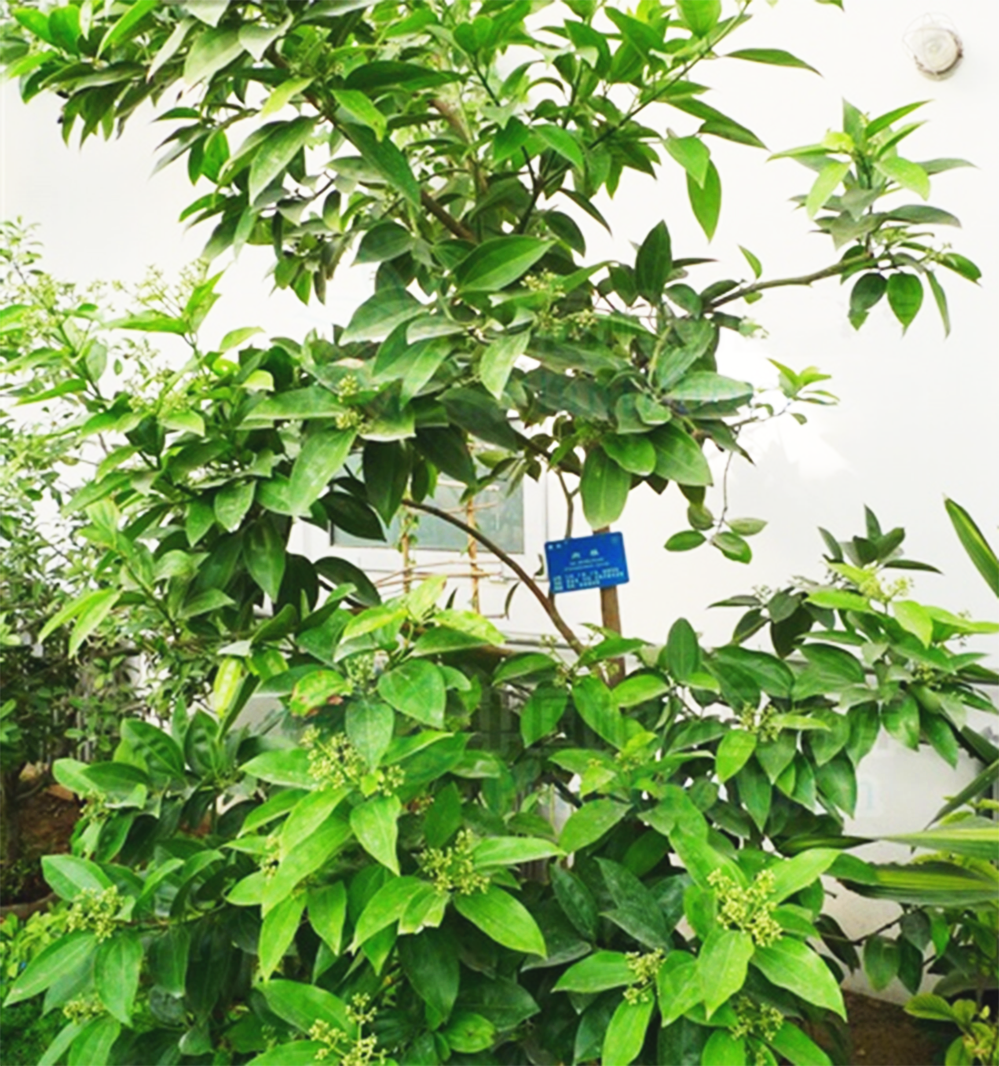
Source
Cinnamon is the dried bark of the Lauraceae plant, Cinnamomum cassia Presl.
Aliases
Mu Gui, Gui, Da Gui, Zi Gui, Da Gui, Yu Gui, etc.
Origin
Mainly produced in Guangdong, Guangxi, Hainan, Yunnan, and other regions.
Currently, the commonly cultivated varieties in China include Chinese cinnamon (Cinnamomum cassia Presl), Qinghua cinnamon (Cinnamomum cassia var. macrophylla), and Ceylon cinnamon (Cinnamomum zeylanicum). Chinese cinnamon is primarily produced in southern Guangxi. Guangxi cinnamon has red bud and white bud varieties, with the white bud variety having the best yield, quality, and resistance. Generally, after 5-6 years of cultivation, the trees can reach about 4 m in height for harvesting, with a maturity period of March to April. Qinghua cinnamon, originally from Vietnam, is the highest quality cinnamon. Its bark thickness and oil content are higher than that of Chinese cinnamon, and it has better growth adaptability than Ceylon cinnamon. Ceylon cinnamon is mainly produced in tropical regions such as India, Malaysia, Sri Lanka, and Mauritius.
Identification
It is tubular or rolled, 30-40 cm long, with a width or diameter of 3-10 cm, and a thickness of about 2-8 mm. The outer surface is brown, with irregular fine wrinkles and transverse raised pores, sometimes showing grayish-white lichen spots; the inner surface is reddish-brown, smoother, with fine longitudinal lines, and oil marks can be seen when scratched with a nail. It is hard and brittle, easily broken. The cross-section is uneven, with the outer side being brown and rough, the inner side reddish-brown and oily, and a yellow-brown line in the middle. It has a strong aroma, with a sweet and spicy taste. (The sweeter and spicier the cinnamon, the better. Chewing for 1 second feels like sugar, and after 2-3 seconds, it feels like chili; continuing to chew results in a sweet and spicy mix, with no other flavors.)
The best quality is characterized by being unbroken, heavy, with fine outer skin, thick flesh, a purple cross-section, high oiliness, strong aroma, sweet and spicy taste, and minimal residue when chewed.
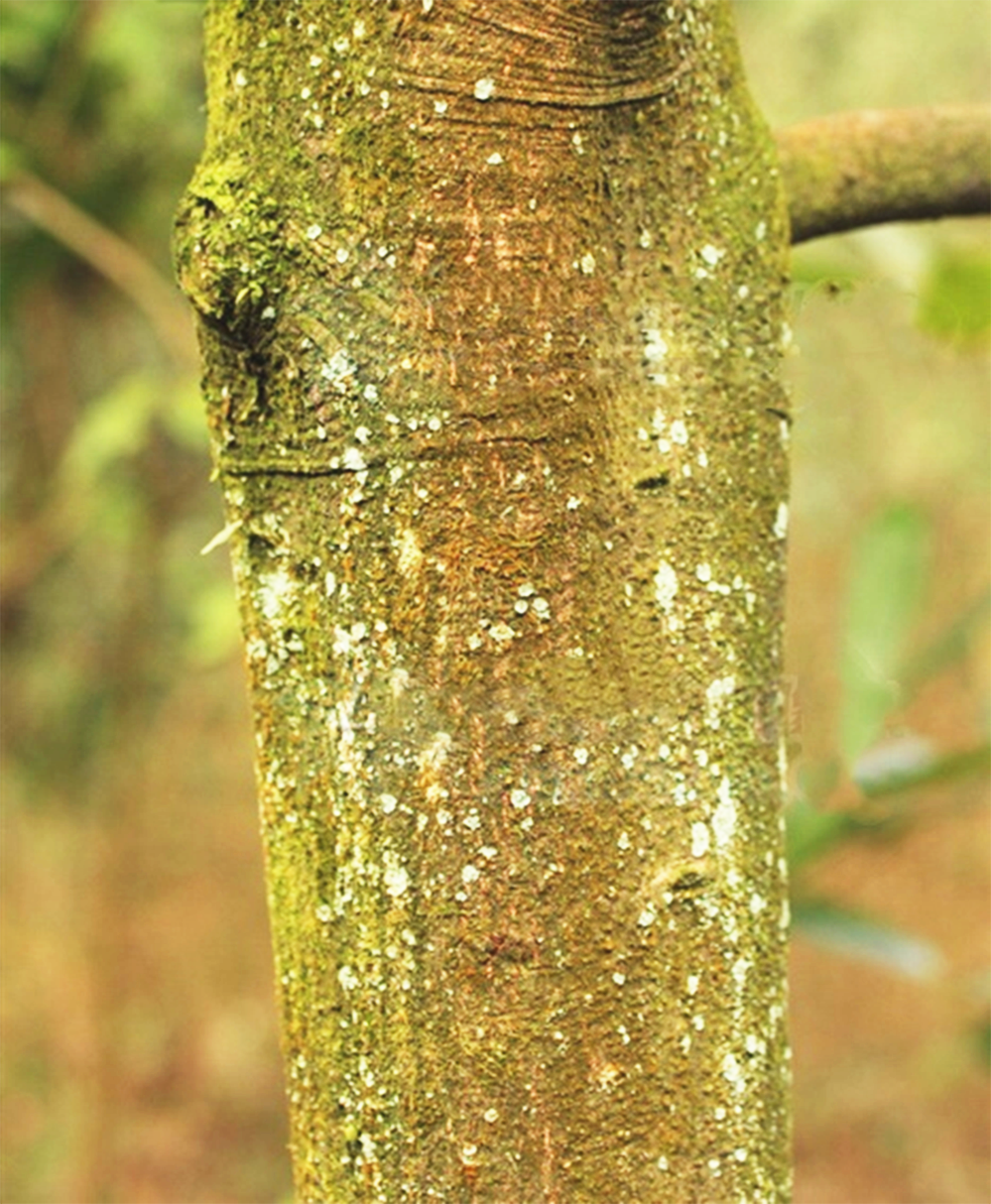
Properties and Channels
Pungent, sweet, and very warm. It enters the Kidney, Spleen, Heart, and Liver meridians.
Functions
Tonifies fire and assists Yang, disperses cold and alleviates pain, warms and unblocks the meridians, and guides fire back to the source.
Main Indications
1. Yang Deficiency Syndrome Kidney Yang deficiency: This herb is pungent, sweet, and very warm, capable of tonifying fire and assisting Yang, benefiting Yang and dispelling Yin. It is a key herb for treating the decline of the fire at the life gate. It is often combined with Fu Zi (Aconitum), Shu Di (Rehmannia), and Shan Zhu Yu (Cornus) to treat insufficient Kidney Yang, decline of life gate fire, impotence, cold uterus, cold pain in the lower back and knees, frequent urination at night, and nocturnal emissions, such as in Shen Qi Wan (Kidney Qi Pill) from the “Jin Kui Yao Lue” and You Gui Wan (Right Returning Decoction) from the “Jing Yue Quan Shu.” This herb also assists Yang while guiding fire downward and promoting the transformation of water and fluids, as seen in the Tong Guan Wan (Passage Unblocking Pill) for urinary retention due to Qi transformation issues. For Spleen and Kidney Yang deficiency leading to chronic diarrhea or dysentery, and Heart Yang deficiency causing palpitations and shortness of breath, it is often combined with Bai Zhu (Atractylodes), Rou Dou Kou (Nutmeg), Ren Shen (Ginseng), and Huang Qi (Astragalus) for differential treatment.
2. Cold Congealing Pain Syndrome Abdominal pain, cold hernia: This herb is sweet and warm, assisting Yang to tonify deficiency, and pungent and warm to disperse cold and alleviate pain, effectively removing stubborn cold and deep-seated chill. It treats cold evil invading or Spleen and Stomach deficiency cold causing cold pain in the abdomen, which can be taken as a powder with wine; or combined with Gan Jiang (Dried Ginger), Gao Liang Jiang (Galangal), and Bi Ba (Cubeb) as in Da Yi Han Wan (Great Relief from Cold Pill) from the “He Ji Ju Fang”; for cold hernia abdominal pain, it is often combined with Wu Zhu Yu (Evodia) and Xiao Hui Xiang (Fennel). This herb is also used for “treating cold bi”; thus, it can be combined with Du Huo (Angelica Pubescens), Qin Jiao (Gentiana), and Dang Gui (Angelica Sinensis) as in Juan Bi Tang (Dispersing Bi Decoction).
3. Cold Congealing Blood Stasis Syndrome This herb disperses and warms, capable of moving Qi and blood, unblocking meridians, dispersing cold, and alleviating pain. When used with Fu Zi, Gan Jiang, and Chuan Jiao (Sichuan Pepper), it can treat chest Yang not thriving and cold evil invading causing chest bi and heart pain, as in Gui Fu Wan (Cinnamon and Aconite Pill) from the “Shou Shi Bao Yuan”; when combined with Lu Jiao Jiao (Deer Antler Glue), Pao Jiang (Fried Ginger), and Ma Huang (Ephedra), it can treat Yang deficiency with cold congealing, blood stagnation, and phlegm obstruction causing Yin sores and flowing abscesses, as in Yang He Tang (Yang Harmony Decoction) from the “Wai Ke Zheng Zhi Quan Sheng Ji”; if combined with Dang Gui, Chuan Xiong (Chuanxiong), and Xiao Hui Xiang, it can treat cold congealing and blood stagnation in cases of amenorrhea and dysmenorrhea, as in Shao Fu Zhu Yu Tang (Lower Abdomen Blood Stasis Decoction) from the “Yi Lin Gai Cuo”.
4. Yang Ascending Syndrome (Floating Yang) This herb is very warm and enters the Liver and Kidney, capable of returning the floating Yang caused by deficiency of the lower source back to its origin, known as guiding fire back to the source. It is used to treat Yuan Yang deficiency, floating Yang causing facial redness, shortness of breath, sweating, palpitations, insomnia, and weak pulse, often combined with Shan Zhu Yu, Wu Wei Zi (Schisandra), Ren Shen, and Mu Li (Oyster).
Although this herb does not have the function of returning Yang to rescue from reversal, when used with Fu Zi, it can enhance the clinical effect of Fu Zi in returning Yang to rescue from reversal, as seen in the “Shang Han Lun” (Treatise on Cold Damage) in the formula for returning Yang to rescue from reversal. Additionally, for those with chronic illness and deficiency of Qi and blood, adding a small amount of cinnamon to Qi and blood tonifying formulas can stimulate the growth of Qi and blood.
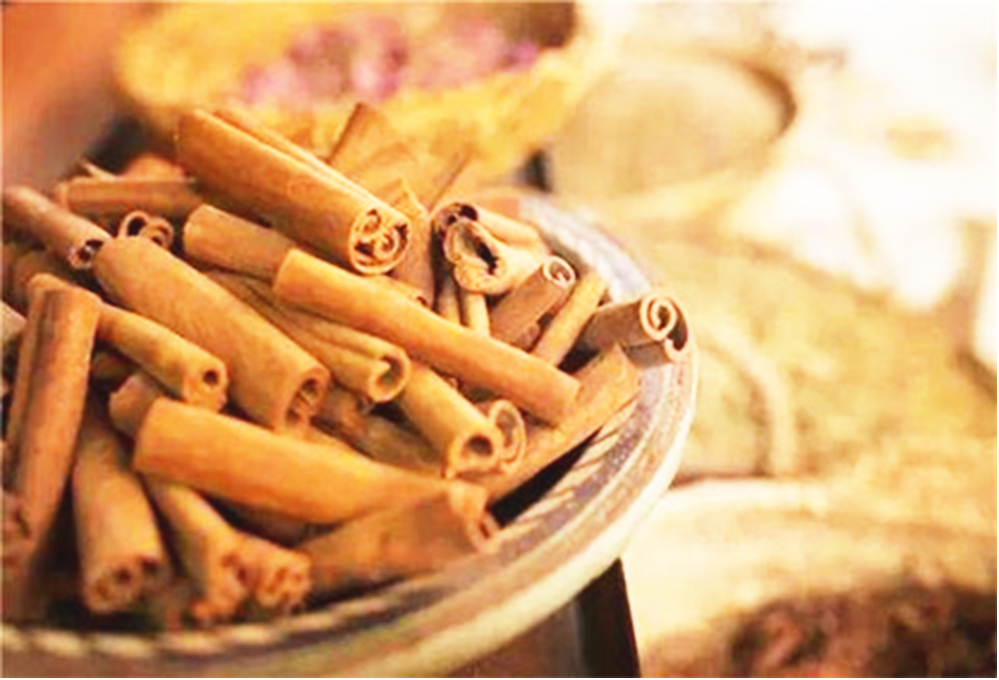
Modern Pharmacology
1. Chemical Components:
Cinnamon contains rich volatile oils, with the main component being cinnamaldehyde, along with o-methoxycinnamaldehyde, trans-cinnamaldehyde, and small amounts of cinnamic acid, ethyl cinnamate, and other compounds. Cinnamon also contains polysaccharides, which are composed of D-xylose and L-arabinose in a 3:4 ratio, and it contains polyphenolic substances.
2. Pharmacological Effects:
(1) Anti-gastric Ulcer Cinnamon can enhance the digestive function of the body, mitigate the stimulation of the gastrointestinal tract, and eliminate gas accumulation in the digestive tract, alleviating gastrointestinal spasmodic pain.
(2) Vasodilation Cinnamaldehyde has vasodilatory effects, lowers blood pressure, promotes blood circulation, alleviates limb pain, and has anti-shock effects.
(3) Anti-inflammatory The active components of cinnamon’s hot water extract, including polyphenols and cinnamaldehyde and its derivatives, have certain anti-inflammatory effects.
(4) Antibacterial Cinnamon’s aqueous extract can significantly inhibit Staphylococcus aureus, Escherichia coli, and others in vitro.
(5) Antioxidant and Antitumor Its components, such as total phenolic substances, quercetin, and kaempferol, have been proven to have good antitumor effects in both in vivo and in vitro experiments.
(6) Prevention and Treatment of Diabetes Cinnamon proanthocyanidins are the main chemical components that combat diabetes, significantly inhibiting the non-enzymatic glycation of proteins in vitro. This suggests that cinnamon may potentially prevent diabetes and its complications to some extent.
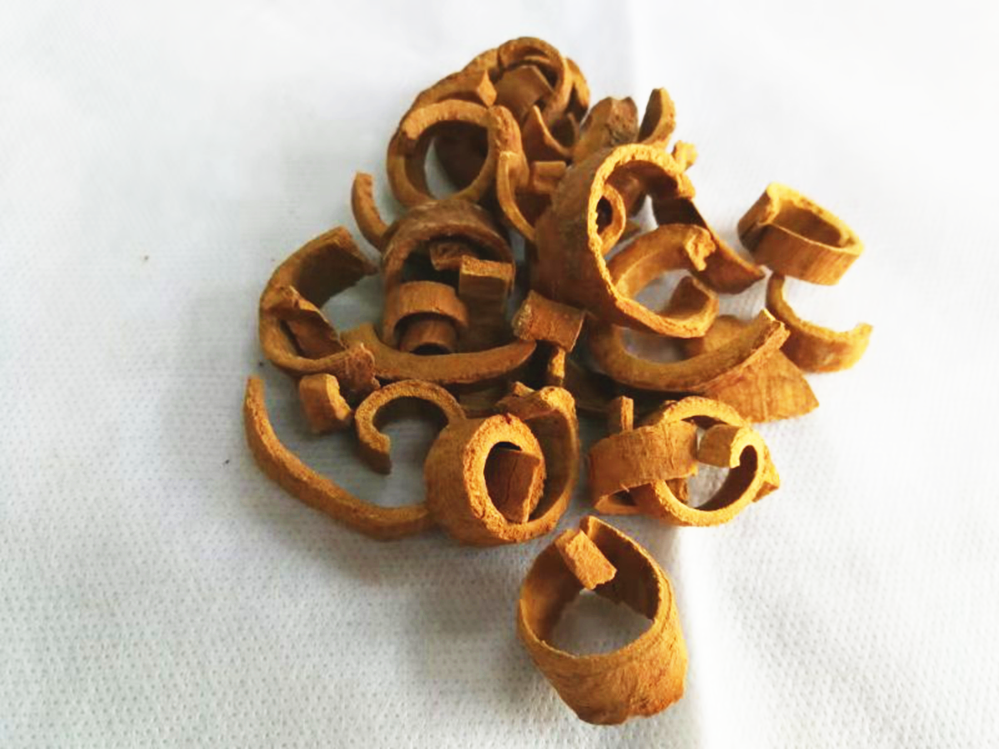
Processing Standards
The best cinnamon is harvested from the bark of trees aged thirty to forty years, while modern practices often involve harvesting from trees aged ten years or five to six years. Method: Remove impurities and rough bark. Crush before use.
Dosage and Administration
Decoction, 1-5 grams, preferably added later or taken as a powder; powdered form, 1-2 grams per dose.
Precautions
This herb is pungent and warm, easily depleting Yin and blood; therefore, it is not suitable for those with Yin deficiency and excess heat, internal heat, or blood heat leading to bleeding. Pregnant women should avoid it. It should not be used with Chi Shi Zhi (Halloysite), Chrysanthemum, or Yao Ti Cao (Plantago).
END
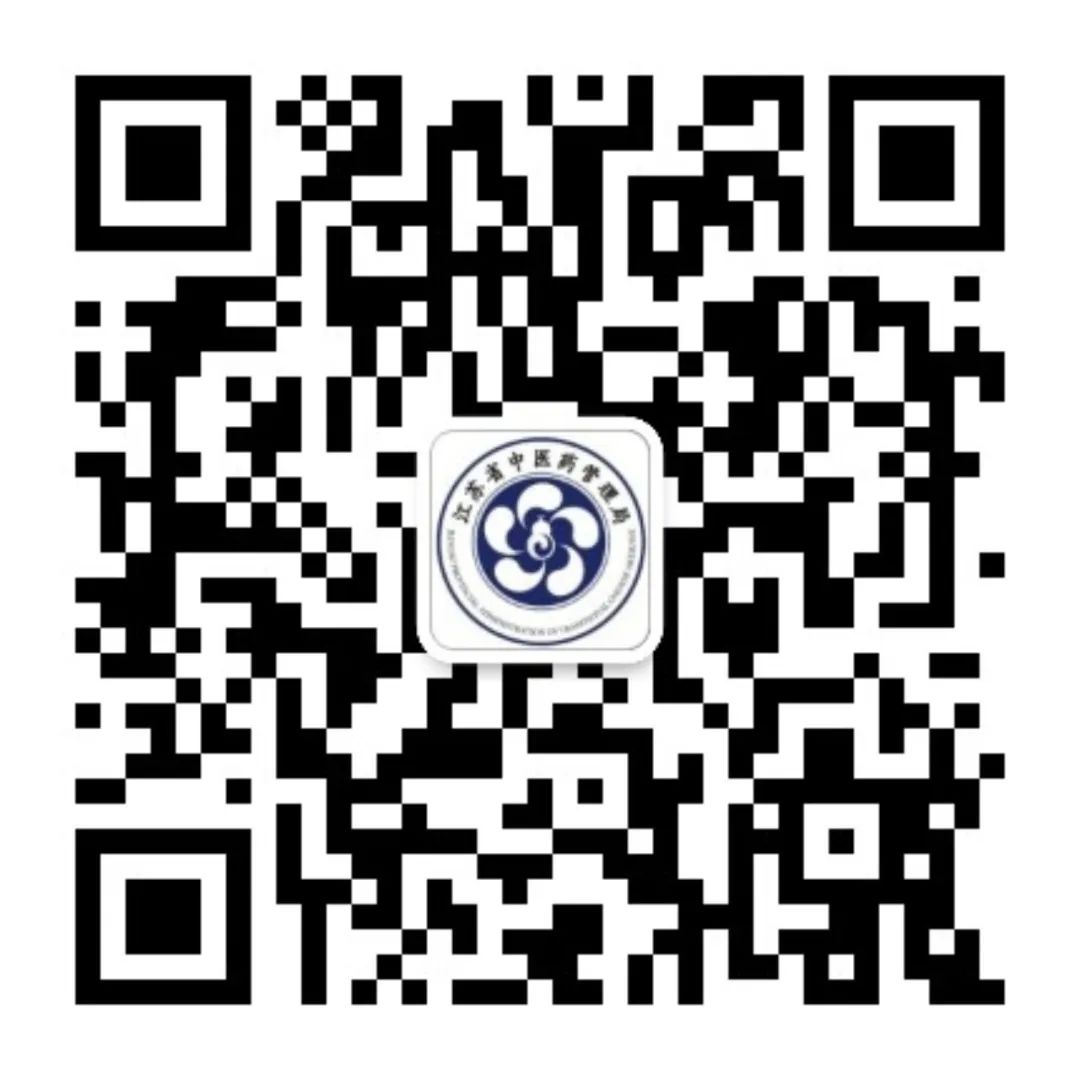
Scan the QR codeto follow “Jiangsu Traditional Chinese Medicine” immediately

